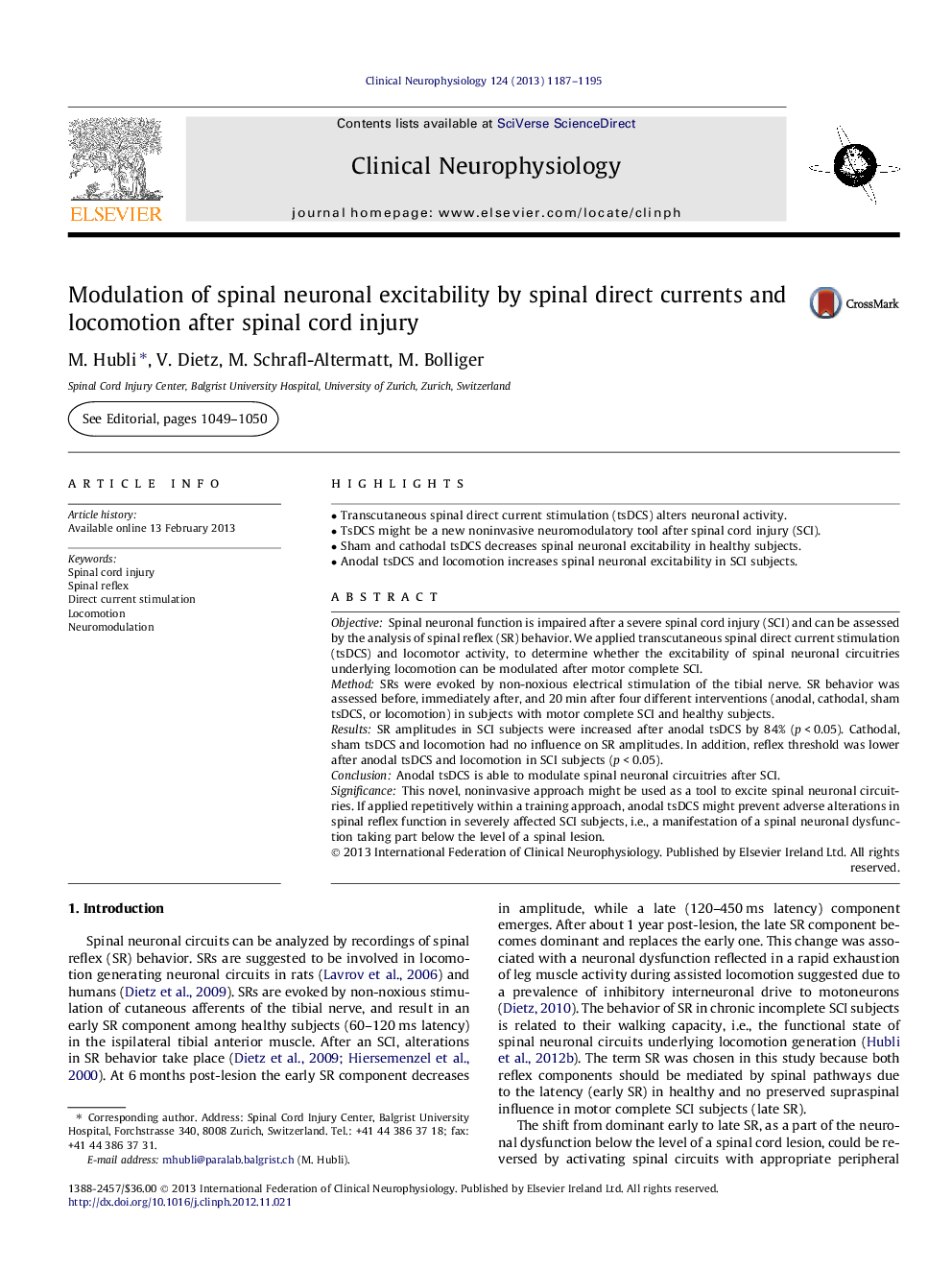| Article ID | Journal | Published Year | Pages | File Type |
|---|---|---|---|---|
| 3043874 | Clinical Neurophysiology | 2013 | 9 Pages |
ObjectiveSpinal neuronal function is impaired after a severe spinal cord injury (SCI) and can be assessed by the analysis of spinal reflex (SR) behavior. We applied transcutaneous spinal direct current stimulation (tsDCS) and locomotor activity, to determine whether the excitability of spinal neuronal circuitries underlying locomotion can be modulated after motor complete SCI.MethodSRs were evoked by non-noxious electrical stimulation of the tibial nerve. SR behavior was assessed before, immediately after, and 20 min after four different interventions (anodal, cathodal, sham tsDCS, or locomotion) in subjects with motor complete SCI and healthy subjects.ResultsSR amplitudes in SCI subjects were increased after anodal tsDCS by 84% (p < 0.05). Cathodal, sham tsDCS and locomotion had no influence on SR amplitudes. In addition, reflex threshold was lower after anodal tsDCS and locomotion in SCI subjects (p < 0.05).ConclusionAnodal tsDCS is able to modulate spinal neuronal circuitries after SCI.SignificanceThis novel, noninvasive approach might be used as a tool to excite spinal neuronal circuitries. If applied repetitively within a training approach, anodal tsDCS might prevent adverse alterations in spinal reflex function in severely affected SCI subjects, i.e., a manifestation of a spinal neuronal dysfunction taking part below the level of a spinal lesion.
► Transcutaneous spinal direct current stimulation (tsDCS) alters neuronal activity. ► TsDCS might be a new noninvasive neuromodulatory tool after spinal cord injury (SCI). ► Sham and cathodal tsDCS decreases spinal neuronal excitability in healthy subjects. ► Anodal tsDCS and locomotion increases spinal neuronal excitability in SCI subjects.
